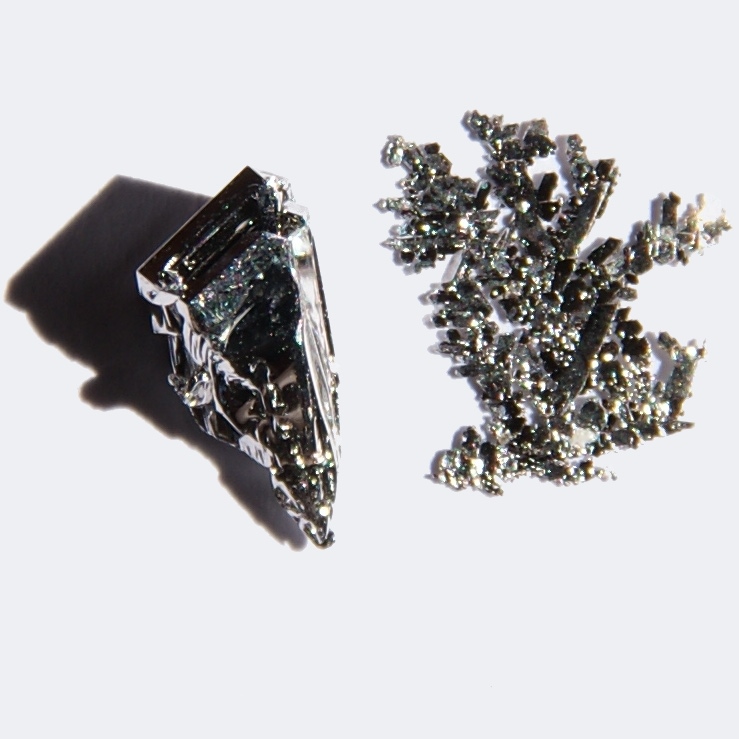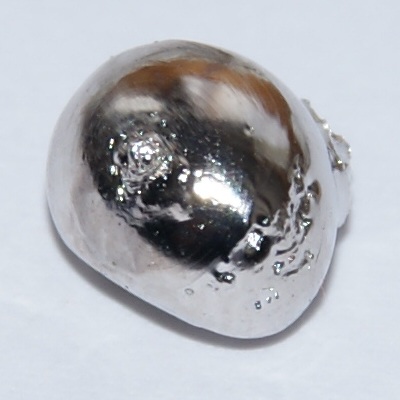Investing in the right opportunities is crucial for long-term profitability and success. In the world of investing, there are countless options to consider, each with its own set of advantages and challenges. One such investment opportunity that has been gaining traction in recent years is platinum rhodium thermocouples.
In this comprehensive guide, we will explore everything you need to know about platinum rhodium thermocouples, from their definition and basic explanation to their applications, benefits, and investment potential.
Whether you’re a seasoned investor or just starting out in the field of investing, this article will provide you with valuable insights into this exciting market.
What is a Platinum Rhodium Thermocouple?
A platinum rhodium thermocouple is a temperature sensor used in various industries for accurate temperature measurement. It consists of two dissimilar metal wires – one made of platinum and the other made of rhodium – connected at one end to form a junction.
When exposed to different temperatures, an electrical voltage is generated at this junction due to the thermoelectric effect.
Platinum rhodium thermocouples play a crucial role in temperature measurement across industries like steel production, petrochemicals, glass manufacturing, and power generation. They provide precise readings essential for process control, quality assurance, and safety measures.
These thermocouples withstand high temperatures and contribute to the efficiency and reliability of industrial processes.
The History of Platinum Rhodium Thermocouples
Platinum rhodium thermocouples have a rich history that dates back to the 19th century when Sir Humphry Davy discovered the unique properties of platinum. This breakthrough led to the development of thermocouples, which use dissimilar metals to measure temperature.
Over time, advancements in technology have improved their design, making them highly accurate and durable. Today, platinum rhodium thermocouples are essential in industries where precise temperature control is crucial, such as aerospace and power generation. Ongoing research aims to further enhance their performance and expand their applications.
How Does a Platinum Rhodium Thermocouple Work?
Platinum rhodium thermocouples operate based on the principle of the thermoelectric effect. This effect occurs when two dissimilar metals are joined together to form a junction and exposed to a temperature gradient.
When this happens, an electrical voltage is generated in direct proportion to the temperature difference between the hot and cold junctions, which allows for precise and accurate temperature measurement.
The composition and construction of platinum rhodium thermocouples play a crucial role in their functionality. Typically, these thermocouples are made up of pure platinum and a platinum-rhodium alloy wire. The specific ratio of these wires varies depending on the desired temperature range and accuracy required for different applications.
Careful construction and calibration ensure optimal performance and reliability in temperature sensing tasks. The wires used in platinum rhodium thermocouples are meticulously crafted to withstand extreme temperatures while maintaining their integrity.
By selecting appropriate materials and manufacturing techniques, these thermocouples can provide accurate measurements even in harsh environments.
The use of platinum in these thermocouples is essential due to its exceptional characteristics such as high melting point, corrosion resistance, and stability over a wide range of temperatures. Additionally, the addition of rhodium enhances the durability and sensitivity of the thermocouple wires.
In summary, platinum rhodium thermocouples rely on the phenomenon of the thermoelectric effect to accurately measure temperatures.
Through careful composition, construction, and calibration, these devices offer reliable performance in various industrial applications where precise temperature monitoring is critical for ensuring operational efficiency and safety.
Applications of Platinum Rhodium Thermocouples
The applications of platinum rhodium thermocouples are diverse and span across various industries, showcasing their versatility and reliability in temperature measurement. One prominent area where these thermocouples find extensive use is in the industrial sector, particularly in temperature measurement.
In the steel and metal industry, precise temperature control is crucial for achieving desired properties in metal alloys. Platinum rhodium thermocouples play a vital role by enabling accurate monitoring of temperatures during different stages of production.
This ensures optimal quality and efficiency, contributing to the overall success of steel production processes.
The petrochemical industry also heavily relies on platinum rhodium thermocouples for temperature measurement. Petrochemical processes involve high-temperature reactions, which require precise monitoring for safety purposes and process optimization.
The robustness of platinum rhodium thermocouples allows them to provide reliable measurements even under harsh conditions, ensuring the safety and efficiency of petrochemical operations.
Another industry that greatly benefits from the use of platinum rhodium thermocouples is the glass manufacturing industry. The complex heating cycles involved in glass production necessitate accurate temperature control for maintaining product quality and consistency.
Platinum rhodium thermocouples are instrumental in achieving this objective by ensuring uniform heating throughout the glass-forming process.
In summary, platinum rhodium thermocouples have found valuable applications across multiple industries where temperature measurement is essential. Their ability to provide accurate readings, withstand harsh conditions, and contribute to process optimization makes them indispensable tools in industrial settings.
Whether it’s in steel production, petrochemical processes, or glass manufacturing, these thermocouples continue to play a crucial role in maintaining quality standards and improving operational efficiency.
Investing in Platinum Rhodium Thermocouples
As industries prioritize quality control and process optimization, accurate temperature measurement devices like platinum rhodium thermocouples are in high demand. These sophisticated instruments offer precise temperature sensing capabilities, making them an attractive investment option.
The emergence of industries such as renewable energy and electric vehicles has further fueled the adoption of platinum rhodium thermocouples.
These devices excel in accurately measuring temperatures in harsh operating conditions, making them invaluable tools for monitoring and controlling components in renewable energy systems and electric vehicles.
Investing in platinum rhodium thermocouples aligns with market demand and offers long-term growth potential. With advancements in technology, these devices are expected to become more versatile and cost-effective, positioning them as indispensable assets across multiple industries.
In summary, investing in platinum rhodium thermocouples provides an opportunity to capitalize on the rising demand for accurate temperature measurement devices.
With their precise sensing capabilities and potential applications in emerging industries, these instruments can strategically position investors at the forefront of this evolving industry landscape.
Benefits and Advantages of Using Platinum Rhodium Thermocouples
Platinum rhodium thermocouples offer a multitude of benefits and advantages that make them the preferred choice for temperature sensing in various industries. Their high accuracy and reliability make them ideal for critical applications where precise temperature measurements are essential.
One significant advantage of platinum rhodium thermocouples is their wide temperature range capability. These thermocouples can withstand extreme temperatures, ranging from cryogenic conditions to high-temperature environments, without compromising accuracy or performance.
This versatility allows them to be used in a wide range of applications, providing accurate measurements across different temperature ranges.
Another key benefit is their suitability for high-temperature environments. The excellent heat resistance of platinum rhodium thermocouples ensures reliable measurements even under challenging conditions.
This makes them particularly valuable in industries that involve elevated temperatures, such as metal smelting, glass manufacturing, and aerospace engineering.
Furthermore, platinum rhodium thermocouples have excellent durability and longevity, ensuring long-term reliability in temperature sensing applications. Their robust construction enables them to withstand harsh operating conditions without degradation or loss of accuracy over time.
Additionally, these thermocouples exhibit exceptional stability and repeatability, allowing for consistent and precise temperature readings over extended periods. This stability is crucial in industries where maintaining consistent temperatures is vital for product quality or process control.
Moreover, platinum rhodium thermocouples offer fast response times due to their thin-walled construction. This rapid response enables real-time monitoring of temperature changes, making them suitable for dynamic processes that require quick adjustments based on accurate readings.
Challenges and Limitations of Platinum Rhodium Thermocouples
Platinum rhodium thermocouples present several challenges and limitations that need to be considered when evaluating their use in various industries. One significant drawback is the high cost compared to other types of thermocouples. This increased expense stems from the use of precious metals in their construction.
The reliance on platinum and rhodium makes these thermocouples relatively more expensive, which can impact investment decisions.
Another challenge lies in the specialized knowledge required for the installation, maintenance, and calibration of platinum rhodium thermocouples. Properly handling these thermocouples necessitates expertise and specialized skills.
To ensure optimal performance and longevity, investors should consider partnering with experienced professionals or companies who possess the necessary knowledge in working with platinum rhodium thermocouples.
Moreover, it is important to note that platinum rhodium thermocouple installations may require additional equipment or components specific to their design. These unique requirements can further add complexity to their installation process, making it crucial to have a thorough understanding of the system’s specifications.
Furthermore, while platinum rhodium thermocouples offer precise temperature measurements over a wide range, they do have limitations regarding their operating conditions. Extreme temperatures or harsh environments may affect their accuracy or durability.
Therefore, industries operating under such conditions must carefully assess whether platinum rhodium thermocouples are suitable for their specific needs.
In summary, the challenges and limitations associated with platinum rhodium thermocouples encompass their higher cost compared to other types of thermocouples due to the use of precious metals. Additionally, specialized knowledge is essential for proper installation, maintenance, and calibration.
Understanding these challenges enables investors to make informed decisions and consider alternative options when necessary.
Why Consider Investing in Platinum Rhodium Thermocouples
Investing in platinum rhodium thermocouples presents a promising opportunity in the growing industrial sector. With the increasing demand for accurate temperature measurement devices, these thermocouples are poised to play a pivotal role.
As industries prioritize precise temperature control, the reliance on reliable sensors like platinum rhodium thermocouples is expected to surge. Their wide range of applications, exceptional performance, and versatility make them an attractive investment option with long-term profitability potential.
[lyte id=’uf1jpSCsQJM’]







